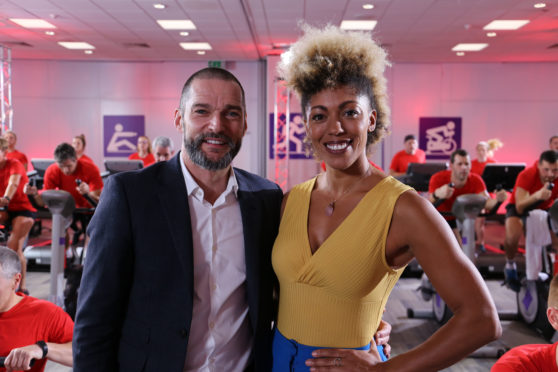
Over the past few weeks, I’ve loved getting back on my bike for my daily exercise.
There’s nothing quite like strapping on your helmet and pumping the pedals for a cycle in the fresh air and sunshine.
I’m up to about 10 miles a day now, and slightly concerned I will end up with quads to rival Chris Hoy by the time lockdown is over! Not sure that’s a great look for a granny. But hey ho.
There are lots of reasons I choose to include exercise in my routine. For a start I always feel much better afterwards. It boosts my mood and maintains my general fitness, but I can’t say I ever do it to burn off calories. I know that running a mile or two may shed more energy than cycling, but I find it boring, repetitive, and my hips groan at me for days. That’s not what exercise is about – it should be an enjoyable part of your life, not just a means of cancelling out calories.
And that’s exactly why I think the controversial new series The Restaurant that Burns Off Calories left such a bad taste in so many people’s mouths.
If you haven’t watched the show, the premise is simple. Diners are invited to enjoy a slap-up meal at a fancy restaurant while a group of fitness fanatics in an adjoining room are tasked with burning off every single calorie from the dishes ordered, using bikes, treadmills and rowing machines until they are beetroot in the face and dripping with sweat.
At first glance, the theory of showing people just how much effort is required to shift the calories in, say, a portion of fish and chips (two hours and four minutes on an exercise bike, apparently) is sound. After all, we are what we eat, so perhaps it could encourage people to make healthier choices.
But, the first episode really went to the extreme, portraying exercise as a punishment and an extra slice of cake as something we should feel guilty about. I can’t see how watching people push themselves to breaking point on a treadmill is going to encourage anyone to take up running, or promote a healthy relationship with food.
After the show aired, eating disorder charity Beat said it saw a spike in calls to its helpline, with the service receiving three times as many calls as usual from the public, and many have criticised the producers for increasing anxiety around food. Yes, it’s important to strike a balance between what we eat and how much we move. But food and exercise should both be things we enjoy, rather than things that might cause emotional or physical pain.
Ultimately, the series has focused on the wrong message at the wrong time. It’s one of the most stressful times in living history right now, and I reckon that we have quite enough on our plate!

Enjoy the convenience of having The Sunday Post delivered as a digital ePaper straight to your smartphone, tablet or computer.
Subscribe for only £5.49 a month and enjoy all the benefits of the printed paper as a digital replica.
Subscribe